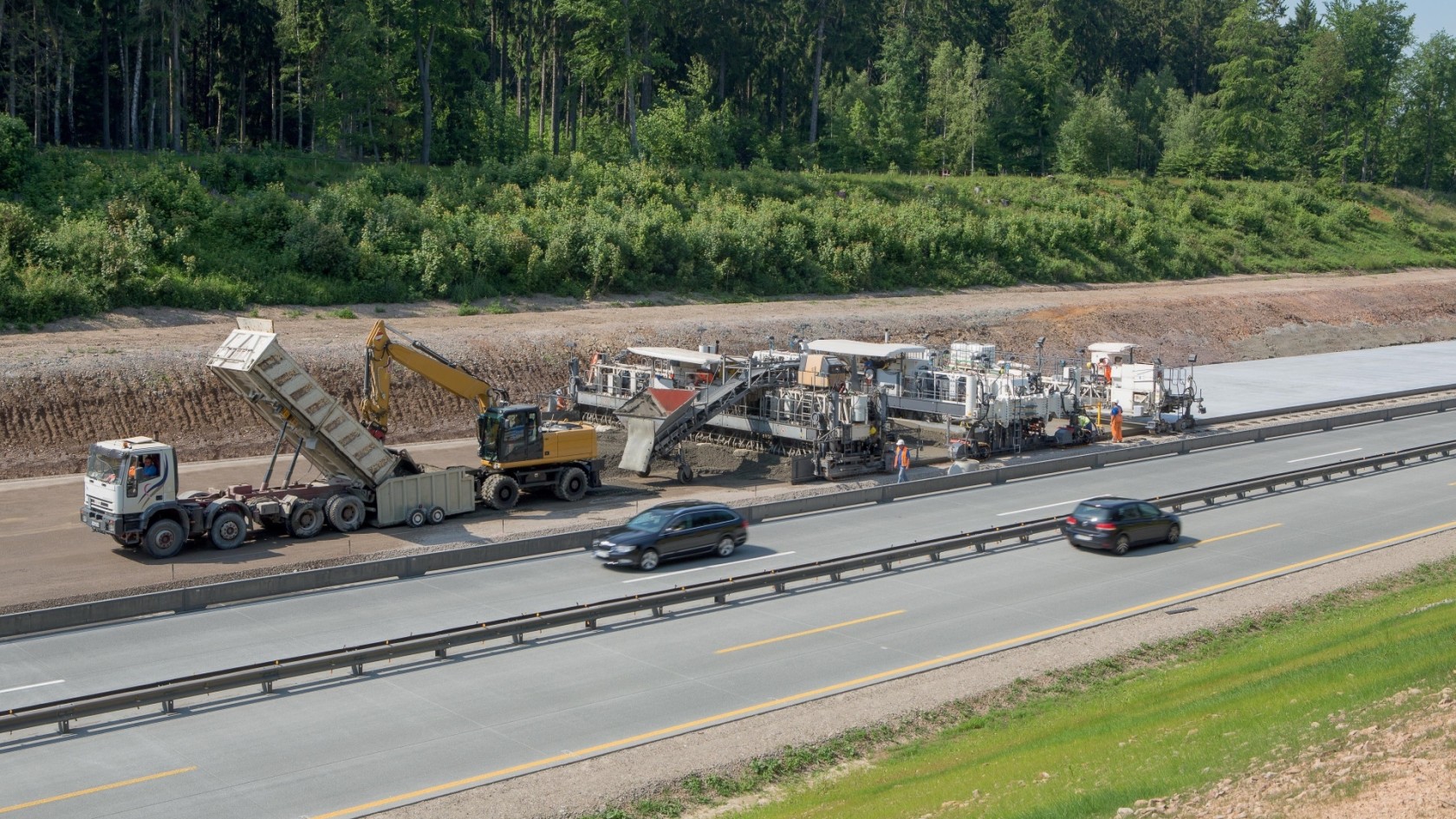Precision in concrete paving


The contractor Eurovia GmbH relies on slipform pavers from Wirtgen when building, repairing and modernizing German motorways. High quality on expansion of BAB A9 in Thuringia was required.
The BAB A9 motorway leads past Brandenburg, Saxony-Anhalt, Saxony, Thuringia and Bavaria, connecting the German metropolises of Berlin and Munich over a total distance of 529 km.
The expansion of the A9 between Triptis and Schleiz over a distance of some 19 km was based for the first time ever on a new model of public-private partnership. In contrast to previous models, the remuneration in this case was dependent on the quality of service provided. In practice, this means that any defects in quality and any limitation on availability result in a reduction of the remuneration paid to the operator by the government.
It was hence of the utmost importance to the consortium tasked with the project – headed by Eurovia GmbH – to achieve the highest quality: Eurovia GmbH is responsible for the planning, construction and operation of the motorway section for the next 20 years, making it available to the German federal government.
Apart from being suitable for universal use, easy to process and available everywhere, concrete surfacing also offers other clear advantages: due to its high load-bearing capacity and resistance to deformation, it prevents the formation of ruts and consequently extends the necessary maintenance intervals.
In view of the increasing volume of heavy goods traffic on motorways, this is a crucial factor.
Concrete paving train
Six motorway lanes extending 19 km equates to a surface area of 550 square kilometers, requiring some 165,000 cubic meters of concrete. Eurovia GmbH deployed a paving train comprising Wirtgen SP 1500 and SP 1500 L slipform pavers to do the job.
Wirtgen GmbH’s modern slipform paver - a paving train consisting of two pavers working independently from each other - paves the dual-layer concrete carriageway in one single pass.
On the A9 job site, this paving set laid down the two-layer concrete pavement in just one pass with an output of approximately 400 - 500 m per day.
The first slipform paver was responsible for the subgrade. The 23-cm-thick bottom-layer concrete was paved true to line and level by the SP 1500 L and completely compacted by an internal vibrator, while the SP 1500 L simultaneously embedded dowels and tie bars in it. This yields a homogeneous base for the 7-cm-thick top-layer concrete.
Eurovia GmbH and Wirtgen GmbH have been close partners for many years now. Summarizing the rationale behind the decision, Site Manager Daniel Böhnke said: "The incredible reliability of the machines is a decisive factor for us. Wirtgen's application advice is outstanding. Service technicians are always available without delay in the event that a problem occurs on the job site."
Wet-in-wet paving
The top-layer concrete is installed immediately after the bottom-layer concrete, so as to ensure optimal interlocking of both layers. The concrete for the top-layer is provided via the bottom-layer concrete paver from a receiving hopper with a charging conveyor and placed in front of the second slipform paver, the SP 1500. The SP 1500 then distributes this material across the entire paving width with its spreading plough, installs the top-layer concrete "wet-in-wet" when passing over it and simultaneously compacts it. The finishing beam and super smoother produce the desired optimum surface finish: during the paving process, a finishing beam is deployed across the roadway while an oscillating super smoother operates in the direction of travel of the paver.
Dual-layer concrete paving offers maximum economic efficiency for paving motorway carriageways. In this project, the Wirtgen paving train achieves an output of approximately 400 - 500 m per day.
Surface characteristics can be successfully optimized with the help of texture curing tools such as a finishing beam and super smoother.


